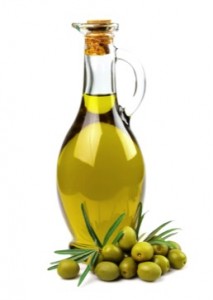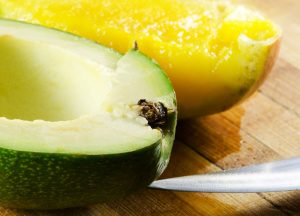Common Ingredient Substitutions
 All right, I confess… I’m not that good at following recipes. My creative spirit takes over and I just totally go into my own ideas. I used to prepare food with so much discipline and now that I have broken free I am at the opposite end of the spectrum. Still trying to find balance. Not my forte.
All right, I confess… I’m not that good at following recipes. My creative spirit takes over and I just totally go into my own ideas. I used to prepare food with so much discipline and now that I have broken free I am at the opposite end of the spectrum. Still trying to find balance. Not my forte.
Learning how to substitute ingredients has really helped me not to mess UP the recipes while messing WITH them. Since we are all individuals with preferences and physical and emotional needs it is my hope that you will substitute ingredients in my recipes (and all recipes) with what you have on hand or what you like best.
The ingredients in recipes are usually included for one of four reasons: Taste, texture, function and the thrill.
Taste
Ingredients might be included in a recipe because of their salty, sweet, sour or fatty flavour. Salty ingredients include miso, braggs, tamari, nama shoyu, Himalayan or sea salt, Umeboshi plum, kelp powder or other seaweeds. Some fermented foods not mentioned in this list also provide some natural salts.
These ingredients can all be substituted for each other. One that comes up quite often is the kelp powder. I like to add this to recipes and you may not have it in your kitchen as an everyday ingredient. So that you don’t have to go shopping online every time you want to make a fancy recipe try substituting one of the other salty ingredients.
Sweet ingredients are… sweet! They may include stevia, coconut nectar, organic sugar, agave or Luo Han Guo to name a few. This  can be a bit trickier because some sweet things are sweeter than others but you can always substitute one for another as long as you are tasting. For example I don’t like to use Agave. When I see this in a recipe I read “Yacon” or “Stevia and water” or “Luo Han syrup”. You can also use whole foods like dates or bananas to sweeten and then you won’t be using as many processed ingredients if that is your goal. You can make up for lost liquid in a recipe after substituting sweeteners by adding water to make up the difference. Do not be afraid to substitute sweeteners even though it may change the recipe. You will totally have success.
can be a bit trickier because some sweet things are sweeter than others but you can always substitute one for another as long as you are tasting. For example I don’t like to use Agave. When I see this in a recipe I read “Yacon” or “Stevia and water” or “Luo Han syrup”. You can also use whole foods like dates or bananas to sweeten and then you won’t be using as many processed ingredients if that is your goal. You can make up for lost liquid in a recipe after substituting sweeteners by adding water to make up the difference. Do not be afraid to substitute sweeteners even though it may change the recipe. You will totally have success.
Sour ingredients include lemon, lime, apple cider vinegar, balsamic vinegar, tomatoes and some fermented foods like sauerkraut yogurt and kimchi. Substituting one for another may change the flavour of your recipe but can be done really well. I prefer to use lemons and limes to using vinegars unless it is really important in a recipe and find swapping these out to be pretty harmless and easy!
Texture
Maybe chopped walnuts, onions or celery are added to a recipe to provide some crunchiness and a certain feel to a recipe. Replace crunchy ingredients with other crunchy ingredients, smooth with smooth and so on.
Some ingredients add fats to recipes which changes the mouthfeel. Fats may come as oils or butters. One question that comes up often is whether coconut oil and coconut butter are interchangeable. I think butters are interchangeable with other butters most of the time. Coconut butter is made out of the whole coconut meat just like almond butter is made from whole almonds. It does not become liquid when melted. I love coconut butter. It is one of my indulgences…. So when I run out I know I can substitute almond butter, hazelnut butter, sunflower butter or even avocado in a recipe depending on the flavour that I want. The only oils I have on hand with any sort of regularity are hemp, flax and coconut so depending on which flavour I am ok with I exchange those for whatever the recipe calls for.
may come as oils or butters. One question that comes up often is whether coconut oil and coconut butter are interchangeable. I think butters are interchangeable with other butters most of the time. Coconut butter is made out of the whole coconut meat just like almond butter is made from whole almonds. It does not become liquid when melted. I love coconut butter. It is one of my indulgences…. So when I run out I know I can substitute almond butter, hazelnut butter, sunflower butter or even avocado in a recipe depending on the flavour that I want. The only oils I have on hand with any sort of regularity are hemp, flax and coconut so depending on which flavour I am ok with I exchange those for whatever the recipe calls for.
Function
Ingredients may have a function in the recipe or a function in our bodies. If an ingredient has a function in a recipe it may be to add moisture, to bind ingredients, to emulsify, thicken or to stabilize for example. Some examples of binders that may be included in whole foods plant based recipes are bananas, chia seeds, flax gel and psyllium. Some binders in cooked recipes may be eggs, xanthan gum or flax gel. An emulsifier might be mustard powder or sunflower lecithin. Psyllium, goji and chia can be thickeners and irish moss, chia and psyllium can be gelling ingredients. I often just ask “which ingredients are keeping this sauce/cake/dressing/pudding together?” before I start removing and replacing.

If an ingredient has a function in our bodies it may be adding a certain nutrient to a recipe or it may be a “functional food” or “tonic herb” like reishi, ginseng or even goji berries. Maybe you don’t want that function but you want another. Usually herbs can be swapped out in elixirs and other recipes to customize them for your needs. Some herbs are still out of my budget 🙂 so I make do with what I have and get creative or leave herbal ingredients out. I remember the first elixir I ever made left me feeling mugged after spending 400 dollars at the Longevity Warehouse. Oops.
So before replacing an ingredient, identify its recipe and nutritional function.
Thrill
Recipes usually have a couple of stars that make the recipe unique and exciting. This may be garlic, shallots, figs, any herb or perhaps an exotic spice blend. Figuring out the star players in the recipe and replacing them with alternates can result in a whole new and maybe better recipe that really feels like your own. Take a peppermint chocolate cheesecake and make it pumpkin spice or take a mango coconut smoothie and turn it into a cherry almond smoothie (yum). Of course if you are using someone else’s recipe, always credit the source. That doesn’t discredit you. We lift each other.





